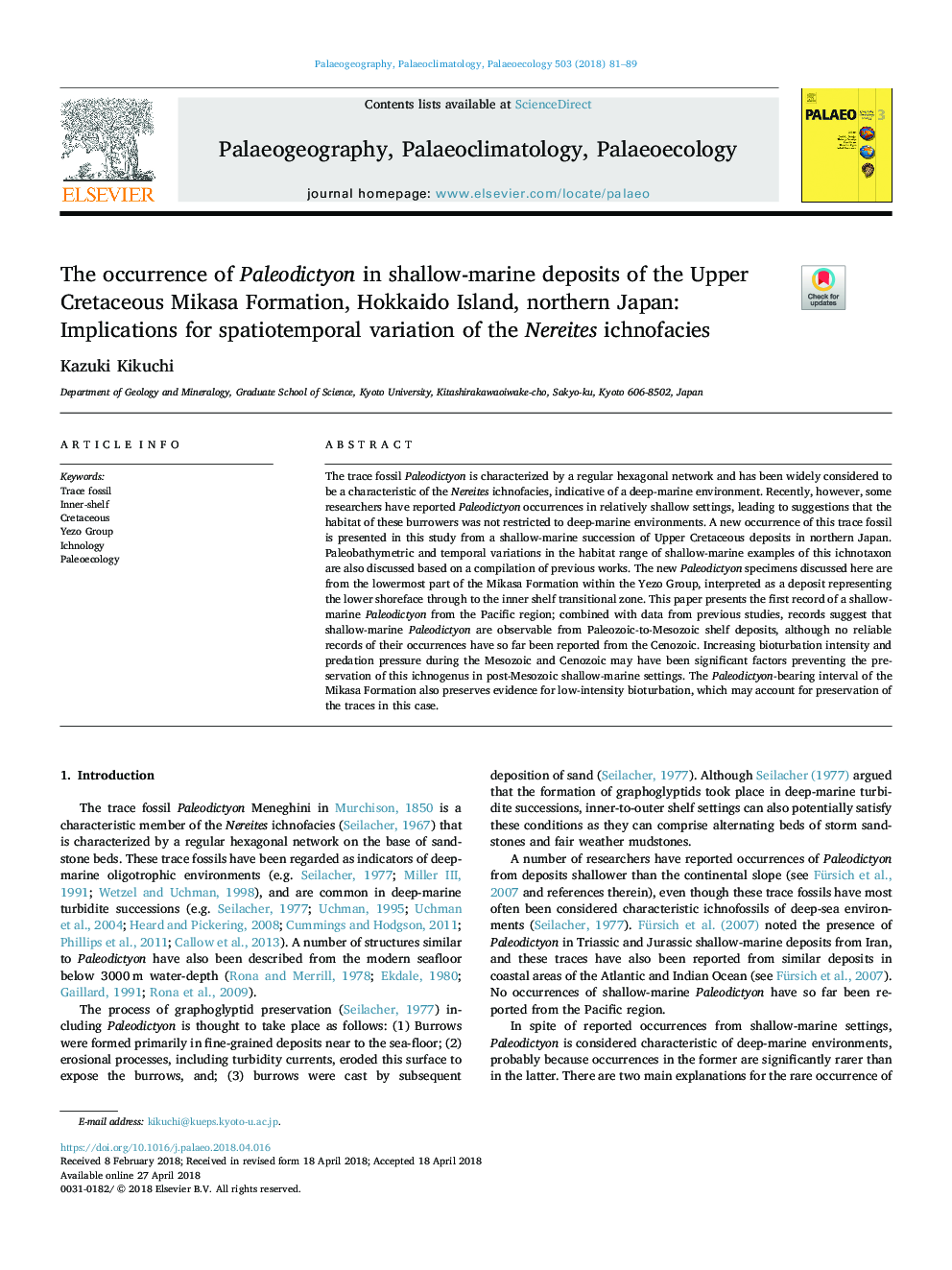| Article ID | Journal | Published Year | Pages | File Type |
|---|---|---|---|---|
| 8868179 | Palaeogeography, Palaeoclimatology, Palaeoecology | 2018 | 9 Pages |
Abstract
The trace fossil Paleodictyon is characterized by a regular hexagonal network and has been widely considered to be a characteristic of the Nereites ichnofacies, indicative of a deep-marine environment. Recently, however, some researchers have reported Paleodictyon occurrences in relatively shallow settings, leading to suggestions that the habitat of these burrowers was not restricted to deep-marine environments. A new occurrence of this trace fossil is presented in this study from a shallow-marine succession of Upper Cretaceous deposits in northern Japan. Paleobathymetric and temporal variations in the habitat range of shallow-marine examples of this ichnotaxon are also discussed based on a compilation of previous works. The new Paleodictyon specimens discussed here are from the lowermost part of the Mikasa Formation within the Yezo Group, interpreted as a deposit representing the lower shoreface through to the inner shelf transitional zone. This paper presents the first record of a shallow-marine Paleodictyon from the Pacific region; combined with data from previous studies, records suggest that shallow-marine Paleodictyon are observable from Paleozoic-to-Mesozoic shelf deposits, although no reliable records of their occurrences have so far been reported from the Cenozoic. Increasing bioturbation intensity and predation pressure during the Mesozoic and Cenozoic may have been significant factors preventing the preservation of this ichnogenus in post-Mesozoic shallow-marine settings. The Paleodictyon-bearing interval of the Mikasa Formation also preserves evidence for low-intensity bioturbation, which may account for preservation of the traces in this case.
Related Topics
Physical Sciences and Engineering
Earth and Planetary Sciences
Earth-Surface Processes
Authors
Kazuki Kikuchi,
